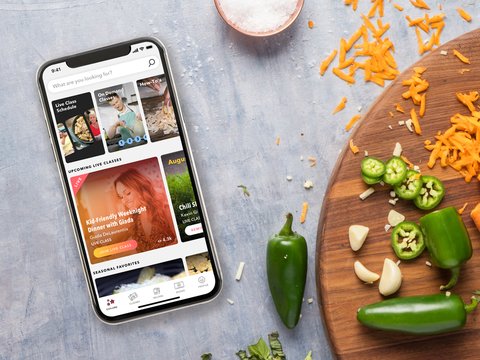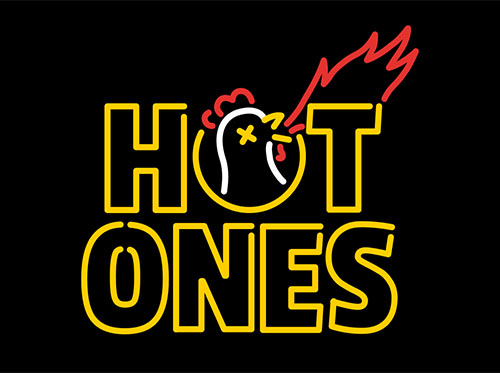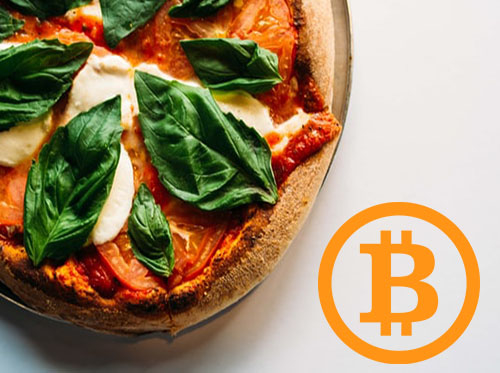*A Chef’s Kiss*: How Food & Lifestyle Will Merge in 2022
As lifestyle commerce brands expand into all aspects of lifestyle, ranging from wellness to home design, one avenue has proven to be especially fruitful: Food. This year, not only do we think this will continue, we expect to see this one-way flow begin to move in two directions as food brands expand outside of the kitchen and into the broader lifestyle space.
Moving forward, food will be the cornerstone of lifestyle. But as food becomes the heliocentric star that lifestyle orbits, specific types of food brands will fare better than others.
Executive Summary
- What We’ve Seen: Lifestyle Brands Test the Waters in Food
- A Natural Evolution: Lifestyle Finds its Footing in Experiential Food Activations
- A Two-Way Street: Food Brands Experiment with Lifestyle
- What Comes Next?: Food Brands Dominate Lifestyle
- Predictions: Who Will Take the Leap?
What We’ve Seen: Lifestyle Brands Test the Waters in Food
The average person interacts with food 5 times per day (2 meals, 3 snacks). As a result of this consistent exposure, we have a more intimate and trusting relationship with food than we do with other aspects of lifestyle. And, as eating is a consumable, expirable experience, our spending choices hit even closer to home. This relationship doesn’t just apply to what we eat, it extends to the food brands we choose to interact with and the non-food brands that provide food-related experiences.
Accordingly, lifestyle brands have taken notice. As food and food media have gained cultural popularity over the last ten years, it was a natural fit for lifestyle brands to venture into Food & Beverage through licensing deals and owned-and-operated (“O&O”) ventures.
Here are a few of our favorites:
- Magnolia launches Magnolia kitchen and dining products, food programming on Magnolia Network, and restaurants at The Magnolia Silos.
- Goop launches Goop Kitchen, which provides healthy, delivery-focused meals on delivery platforms in Los Angeles, as well as Food & Beverage-focused products in the Goop store.
- Lululemon opens Fuel restaurants in select stores.
- Complex launches Hot Ones Frozen Bites using their own Hot Ones Sauces.
- Barstool’s Pink Whitney, Owen’s Mixers Transfusion, One-Bite Pizzas, and Barstool Bites.
These brands, some of the most trusted in lifestyle, have done well on these ventures — Complex turned a YouTube interview show into an 8-figure business. Magnolia Table Vol. 1 was the #2 Non-Fiction title of the year after its publication, second only to Michelle Obama. For the next area of expansion, it made sense for lifestyle brands to use their core competency: experiences.
A Natural Evolution: Lifestyle Finds its Footing in Experiential Food Activations
Having found a foothold in the food space, it was natural for lifestyle brands to gravitate towards what they know best. At its core, lifestyle is all about experiences — the things we do with our time, the places we visit, and the way we live. Now, we’re starting to see the beginning stages of lifestyle trending towards experiential food offerings, both IRL and digital.
- Complex launches the First We Feast Lagoon at its ComplexCon events, bringing food from its media platforms to IRL visitors.
- Barstool opens Barstool River North in Chicago, a sports bar and restaurant.
- Kith opens an outpost of famous NYC brunch spot, Sadelle’s, in its Paris store. It also released a limited run of merchandise to go alongside the opening.
- The Hundreds, the LA-based streetwear brand, launched Family Style Fest, a food festival that pairs clothing brands and well-known restaurants to create custom collaborations. This, in particular, was very well done. Expert curation and pairings of relevant streetwear brands and food brands.
- Time Out opens their Time Out Markets across the globe in Lisbon, Chicago, Miami, NYC, Boston, Montreal, and Dubai. (London and Prague opening in the near future)
- As we reported in 2020, in response to COVID-related closures, sports venues and their related teams launched “at-homified” stadium food experiences.
Over the next 12-24 months, we expect to see many more lifestyle brands expand into the experiential food space, both individually and through collaborations with existing food brands. Specifically, these partnerships will include ghost kitchens, food festivals, and digital activations.
A Two-Way Street: Food Brands Experiment with Lifestyle
As the relationship between consumers and food is so intimate, trusted lifestyle brands have made their way into the kitchen. Lately, because of the same dynamic, we’ve seen the seeds of this happening in reverse. Food brands, using the trust that they’ve established with their customers, are making their way into lifestyle. Here at RockWater, we’re confident that this is an area of real acceleration.
As food and restaurants have developed cultural value, food has become a foundational identifier of lifestyle. It’s become increasingly common to see people wearing restaurant and food merchandise just like any other piece of streetwear.
- Erewhon launched a line of merchandise that quickly sold out.
- The Apple Pan, LA’s legendary burger joint, released a limited line with Madhappy.
- Craig’s, still home to one of the hottest tables in LA, launched a limited edition sunglasses line with Illesteva.
- Even PF Changs recently launched a streetwear-inspired clothing line with accompanying cookware.
High-end merchandise from popular restaurants is just as relevant as the latest OFF-WHITE drop.
The most substantial example we’ve seen is Food52’s recent acquisition of Schoolhouse, a homeware and lighting design company. Having established themselves in their readers’ kitchens, and fresh off new investment from TCG, Food52 has expanded their media and ecommerce footprint to encompass the home at-large. This deal will serve as the blueprint for what’s to come, as food brands start to make inroads throughout lifestyle.
What Comes Next?: Food Brands Dominate Lifestyle
As we saw in Food52’s acquisition of Schoolhouse, food-native brands are ready to activate at scale in the broader lifestyle space. That said, not all brand-types will see the same success.
Food Media and Personalities
At first glance, food media seems among the most well-positioned. As their product is already experience based, food media publishers have a built-in understanding of selling both experiences and feelings.
Moreover, food media’s personality-driven content establishes them as trusted curators of products; their influence is a result of their taste. As a follower, you trust food media to filter out the “bad” and promote the “good”. If you trust them to recommend what to put in your body, an incredibly personal suggestion, you’d trust them to recommend choices around style or wellness.
Take Bon Appetit, for example.
Before their public troubles and restructuring in 2020, BA had a roster of creators with dominant influence over the eating and cooking habits of their readers and viewers. All it took was a brief mention of a specific product or ingredient, and the product would immediately sell out across online marketplaces (hats off to anyone who was able to find Diamond Crystal Kosher Salt in May of 2020.)
Interestingly, that influence was not limited to BA’s food recommendations.
Brad Leone’s woodworking business sold out of all products. Molly Baz’s signature jumpsuits were impossible to track down. Claire Saffitz’s hair even had its own twitter account.
It’s a short leap from food media to lifestyle media, and the jump is equally manageable on the commerce side. General media brands have already displayed a propensity to monetize through e-commerce, and these brands have done the same in their current lane.
D2C Food Businesses
D2C brands also have advantageous attributes when considering an expansion into lifestyle. Their customers have already made conscious decisions to bring these brands into their homes. Often, these D2C brands have better relationships with their customers than CPG companies, usually on a name-basis, as consumers have to act intentionally when they want to engage with them. For example, when I want to place a new order of coffee from my favorite D2C coffee purveyor, Cometeer, I have to navigate to their dedicated sales channel within their ecosystem. In contrast, CPG food products are accessed through broad, unspecific sales channels like online marketplaces and grocery stores. As a result, I feel a deeper connection to the D2C brands I buy from. Moreover, through owning the customer relationships, these businesses have robust customer data sets which enable them to make informed strategic decisions.
A potential headwind could be the lack of content presence of some smaller D2C brands, but those with decent media experience should have the ability to expand their cache to a larger product mix.
As an example, Truff, the cult-favorite truffle-infused hot sauce, feels like more than just a hot sauce company. Their celebrity ties, sleek label, and high price tag give the brand an air of luxury. Tabasco, on the other hand, feels like more of a tool than a treat. Liking Tabasco isn’t a signifier of personal identity, but liking Truff could be. Hence, it’s more viable to expand into lifestyle categories at a more premium level. Truff has the air of a streetwear brand, wrapped in the cellophane of a simple condiment. If Truff were to launch hats with their modern, geometric logo, they’d feel more like a premium fashion item than basic merchandise.
Restaurants & Hospitality Groups
On a much smaller scale, restaurants could do very well in the lifestyle space. They have the most personal relationships with the consumer. Their customers occasionally interact with ownership directly, and build ties and memories that go beyond those of food brands and media publishers. As we saw during the early stages of the pandemic, regulars and passive customers alike reached into their pockets to support the restaurants they cared about. Moreover, the ability to get reservations at the hottest restaurant in town is as much (if not more) of a societal flex as wearing a sought-after vintage watch.
As mentioned in earlier examples, merch from popular restaurants is streetwear these days, and certain trendy restaurants have coast-to-coast recognition. As someone who grew up in the Midwest, I was endlessly jealous of the kid who came back to school on the Monday after winter break sporting an In-N-Out t-shirt.
That said, the majority of nationwide chains just don’t meet the “cool enough” test. And most local brands that do, simply don’t have the reach to create meaningful commerce in other verticals.
Traditional CPG
At first glance, CPG’s growth in this category seems like more of an uphill battle, and it likely would be. Although CPG brands have the reach and capital to experiment at scale, most have almost no “cool” factor. Lifestyle is often meant to be aspirational; as much as I love Jif peanut butter, I don’t aspire to live my life based on my preference for creamy or chunky. For example, McDonald’s, whose brand is on everything from toys to mittens, sells adjacent products that feel like more of a gimmick than a personal identifier of values and preferences.
There are isolated examples of brands that could succeed, but those that would more closely resemble the brand-types listed above than they do a true CPG brand. Perhaps, brands in this category could find success in collaborations with aspirational lifestyle brands as an inroad to “cooler” products, like Coke did in their 5 seasons of collaborations with Kith.
Predictions: Who Will Take the Leap?
Now comes the fun part of making predictions — making clear, specific bets that have the potential to be very incorrect. But we like to be bold at RockWater, so let’s dive in…
Lifestyle → Food
For lifestyle brands moving into food, we think that food-based wellness is an obvious and under-tapped sector. As of 2022, wellness is a $1.5 trillion industry and wellness food accounts for $750 billion.
Large-scale: Adidas. In their 97 year history, Adidas has flirted with food lightly. From pizza sneakers to products made from recycled water bottles, they’ve danced just outside the arena but have yet to buy a ticket. Given their rise in cultural market-share in the last 10 years (largely thanks to Kanye West and the Yeezy brand), they are perfectly situated to make a move in food & beverage. The obvious entry points would be sports drinks and other performance-based sustenance. If they’d rather buy than build, they could acquire a brand like Athletic Greens, the nutrient-dense beverage unicorn, and have an immediate foothold.
Mid-scale: Vuori. Fresh off a $400 million check from Softbank and a $4 billion valuation, the Encinitas-based athleisure brand has some real growth capital. Given their more niche focus of yoga and surfing, a smaller-scale acquisition could make more sense. Maybe a brand like Greater Than, the coconut-water based sports drink, would give them the ability to experiment. And if Vuori would prefer to build, juice bars in their beach-town retail hubs feel like an inevitability.
Food → Lifestyle
This is an area of accelerated growth that will define the media x commerce space throughout the next five years. Using the trust they’ve built with their customer bases through the intimacy of the food relationship, food brands will grow to build empires that encompass the entire lifestyle space. In addition to those mentioned above (Truff, Malibu Farm) here are a few brands we think will do well:
Traeger: Strong brand affinity and clear ties to outdoor lifestyle as a barbeque brand. Easy expansion into camping, outdoor living, and tailgating culture.
Binging with Babish: As one of the largest food channels on YouTube, Babish (Andrew Rea) has already driven meaningful revenue through his cookware lines. His newer series, Being with Babish, encompasses more of his life than just his kitchen. Feels like men’s grooming products, home design, and travel could be right in his strike zone.
Ghetto Gastro: Truthfully, Ghetto Gastro is a lifestyle. The collective of chefs, with strong ties to NYC and the Bronx, promotes healthy eating and living for all. Their vegan waffle mixes feature ancestral grains from Africa and Asia. They’ve released great merchandise already, and could certainly succeed with more. Through the promotion of wellness for all people, no matter the background, the Ghetto Gastro team could easily make waves outside of food.
Erewhon: Honestly, I’m surprised that Erewhon hasn’t launched a homeware line and store already. LA’s guilty pleasure is the true embodiment of aspirational wellness. Cruelty-free fragrances and skincare, vegan leather goods, a larger media footprint — it just makes sense. Additionally, experiential lifestyle activations seem like a perfect brand-fit: Yoga retreats, meditation studios (both virtual and IRL)… keep an eye on this one.
In conclusion…
For both food and lifestyle, 2022 will be defined by this cross-experimentation. Lifestyle brands will continue to expand into food, and food brands will forge a broader path outside the kitchen. Digital and real-life experiential experimentation will permeate the two industries. In both cases, brands with the strongest ethos, and those most relevant to current culture, will find the greatest success.
Here at RockWater, we’re excited for what’s to come and would love to hear your thoughts. We consult for many brands across both food and lifestyle, and love to riff on ideas. Ping us here at anytime.



